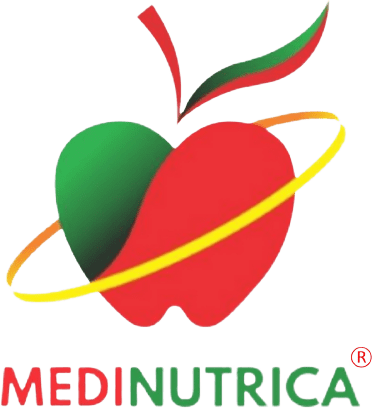Diabetes: Types, Symptoms, and Risk Factors
What is Diabetes ?
Diabetes is a long-term health disorder characterized by increased levels of blood sugar, commonly known as blood glucose. It results from the body’s inability to effectively produce or use insulin, a hormone that regulates glucose uptake into cells. There are two main types of diabetes: Type 1, typically diagnosed in childhood or adolescence and characterized by a lack of insulin production, and Type 2, more often diagnosed in adulthood and associated with insulin resistance. Both types can lead to serious health complications, including heart disease, kidney dysfunction, nerve damage, and vision problems, emphasizing the importance of careful management through lifestyle modifications, medication, and regular monitoring of blood sugar levels. Diabetes affects millions of people worldwide and underscores the significance of public health initiatives aimed at prevention and education about this widespread condition.
Types of Diabetes
There are three main types of diabetes: Type 1 diabetes, Type 2 diabetes, and gestational diabetes. Here’s a brief overview of each:
Type 1 Diabetes: This type of diabetes is an autoimmune condition in which the immune system mistakenly attacks and destroys the insulin-producing beta cells in the pancreas. As a result, people with Type 1 diabetes do not produce insulin and require lifelong insulin therapy through injections or an insulin pump. It is typically diagnosed in childhood or adolescence and accounts for a relatively small percentage of all diabetes cases.
Type 2 Diabetes: Type 2 diabetes is the most common form of diabetes, accounting for the majority of cases. It typically develops in adulthood but can occur in children as well In Type 2 diabetes, the body’s cells become resistant to insulin, resulting in a decreased response to its effects. Additionally, the pancreas may not be able to produce enough insulin to counterbalance this resistance. Lifestyle factors, such as poor diet, lack of physical activity, and genetics, play a significant role in its development. Management often involves dietary changes, exercise, oral medications, and, in some cases, insulin therapy.
Gestational Diabetes: Gestational Diabetes is a condition that takes place during pregnancy when the body cannot create enough insulin to handle the heightened level of demand. It usually resolves after childbirth, but women who experience gestational diabetes are at a higher risk of developing Type 2 diabetes later in life. Controlling blood sugar levels during pregnancy is crucial to minimize risks to both the mother and the baby.
Symptoms of Diabetes
The typical indications of Diabetes (Type 1 and Type 2) are as follows:
Frequent Urination (Polyuria): Increased blood sugar levels can lead to excessive urination as the body tries to eliminate excess glucose through urine.
Excessive Thirst (Polydipsia): Frequent urination can cause dehydration, leading to increased thirst.
Extreme Hunger (Polyphagia): Despite eating, people with diabetes may still feel hungry and experience unexplained weight loss.
Fatigue: Diabetes can affect energy levels, leading to persistent fatigue and weakness.
Blurred Vision: High blood sugar levels can cause changes in the eye’s lens, leading to temporary blurred vision.
Slow Healing of Wounds: Diabetes can impair the body’s ability to heal, making cuts and sores slow to heal and increasing the risk of infections.
Frequent Infections: High blood sugar can weaken the immune system, making individuals more susceptible to infections, particularly urinary tract and skin infections.
Tingling or Numbness: Prolonged high blood sugar levels can damage nerves, causing tingling or numbness, particularly in the hands and feet (diabetic neuropathy).
Irritability: Mood swings and irritability can sometimes be associated with fluctuating blood sugar levels.
Additional Symptoms in Type 1 Diabetes:
Sudden Weight Loss: In Type 1 diabetes, where the body doesn’t produce insulin, the lack of insulin can lead to rapid weight loss despite increased hunger and food intake.
Additional Symptoms in Type 2 Diabetes:
Yeast Infections: Individuals with Type 2 diabetes may be more prone to yeast infections, especially in skin folds and genital areas.
A medical condition known as acanthosis nigricans can result in the manifestation of darkened and thickened patches of skin, typically observed in the neck, armpits, or groin.
Risk Factors about Diabetes
Several risk factors can increase an individual’s likelihood of developing diabetes. Understanding these risk factors can help individuals take preventive measures and make lifestyle changes to reduce their risk. Here are some key risk factors for diabetes:
Family History: A family history of diabetes, especially in first-degree relatives (parents or siblings), increases the risk of developing the condition. Genetic factors play a significant role in both Type 1 and Type 2 diabetes.
Age: Increasing age is associated with an elevated risk of developing Type 2 diabetes. It is more common in adults, especially those over the age of 45. However, Type 1 diabetes can develop at any age, typically during childhood or adolescence.
Obesity: Excess body weight, particularly abdominal or visceral obesity, is a significant risk factor for Type 2 diabetes. Fat cells, especially around the abdomen, can release hormones and other substances that contribute to insulin resistance.
Physical Inactivity: A sedentary lifestyle and lack of regular physical activity can increase the risk of Type 2 diabetes. Exercise helps control weight, improve insulin sensitivity, and regulate blood sugar levels.
Unhealthy Diet: Consuming a diet high in refined sugars, saturated and trans fats, and low in fiber can contribute to obesity and insulin resistance, increasing the risk of Type 2 diabetes.
Gestational Diabetes: Gestational diabetes is associated with an increased likelihood of developing Type 2 diabetes in the future for women who have experienced it during pregnancy.
Polycystic Ovary Syndrome (PCOS): Women with PCOS, a hormonal disorder, have an increased risk of insulin resistance and Type 2 diabetes.
High Blood Pressure: Hypertension (high blood pressure) is often associated with diabetes. Managing blood pressure is important in diabetes prevention and management.
High Cholesterol Levels: Abnormal lipid profiles, including high levels of LDL cholesterol and low levels of HDL cholesterol, can contribute to the development of cardiovascular disease, which is more common in people with diabetes.
Ethnicity: Certain ethnic groups, including African American, Hispanic, Native American, Asian American, and Pacific Islander populations, have a higher predisposition to Type 2 diabetes.
Sleep Apnea: Sleep disorders, particularly obstructive sleep apnea, have been linked to an increased risk of Type 2 diabetes.
Smoking: Smoking is associated with insulin resistance and an increased risk of Type 2 diabetes, particularly in heavy smokers.


